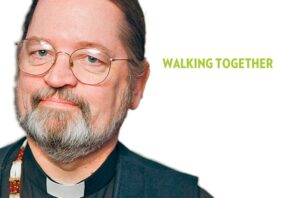
[image: “We can grow by becoming smaller, in receiving and living the Word in sustainable and replicable communities of care and discipleship.” Photo: Rawpixel.com/Shutterstock]
When it comes to the life of the church, the love that the Holy Spirit moves in our hearts can be clearly identified in four primary ways: compassion for those in need, commitment to a just society, adoration of God and a life of sacrificial love towards each other. These are essentially animated by the gospel, the reading of Scripture, prayer and the celebration of the Eucharist. In these ways, the life, death, resurrection, and the Second Coming of Christ are made living and real in human beings, in history, and in Creation. We dare to believe and say that, in these ways, there is evidence of the World to Come.
When I was in seminary—Adam and Eve were just a year ahead of me—the church (with growing ecumenical cooperation and planning) clearly felt a responsibility, desire and joy to make these four ways available to every heart and in every community. Not only in Canada—this was a global aspiration. We had a strategy and a method. We identified the parish church as the best platform to reveal these ways. It was our means of discipleship and disciple making. The parish church, in turn, was provided an affordable and rugged means of presence: a visible building and a parish priest accessible to parishioners and those in need.
For good reasons, we have since developed a bit of humility about the societal influence of our work in relationship to other voices in our communities. We no longer feel we have the right to tell everyone what to do. Whether or not it had been a detriment to our witness in the past, the best seats at the banquet of Western society are now no longer reserved for our clergy. These losses, if that is what you wish to call them, do not hurt the strength and authority of our words and deeds. From my point of view, they enhance it.
Though we may blame it on a growing sense of humility, many of us have really lost touch with our mission and its saving power. Today, the horizon of our mission ends at the edges of our diminishing capacity to afford what was once no more than a strategy and method. What was once the means to a goal has become our goal, the definition of our identity, and the shrinking island of our presence in a world that no longer understands us and, worse yet, that we don’t seem to understand. In the placement and maintenance of our parishes, we followed the trends and migrations of the people of our familiar ethnic constituency who could afford our strategy and method. In the wake of our growing absence in rural areas and in urban areas, we (and the other churches that have joined us in this pattern) have left the field to poverty, the voices of hate and a decaying environment. We must take some blame for these growing forces across the land.
Yes, I know that many of us work tirelessly to articulate a new horizon in the face of the decay of our older strategies. Indigenous elders and youth are right there with us. I am not, by any means, articulating this picture, that may appear grim, out of a lack of hope. In fact, I believe that God is speaking a Word of hope to us with considerable clarity right now, precisely in the tatters of our old way. We can grow by becoming smaller, in receiving and living the Word in sustainable and replicable communities of care and discipleship. Some of our remaining buildings will become launching pads for the multiplication of smaller communities of disciples across the land and throughout society. In many places, our constituency has become older, but in the Christian life spiritual significance grows with age and, amazingly, weakness. Our life and strength are not found in ways that are defined by the usual human metrics—money, power, and worldly influence. Our life is found in identification with the one who became poor to make us rich, the one who died to give us life, the one who now waits to be resurrected anew in and through our redeemed hearts.

